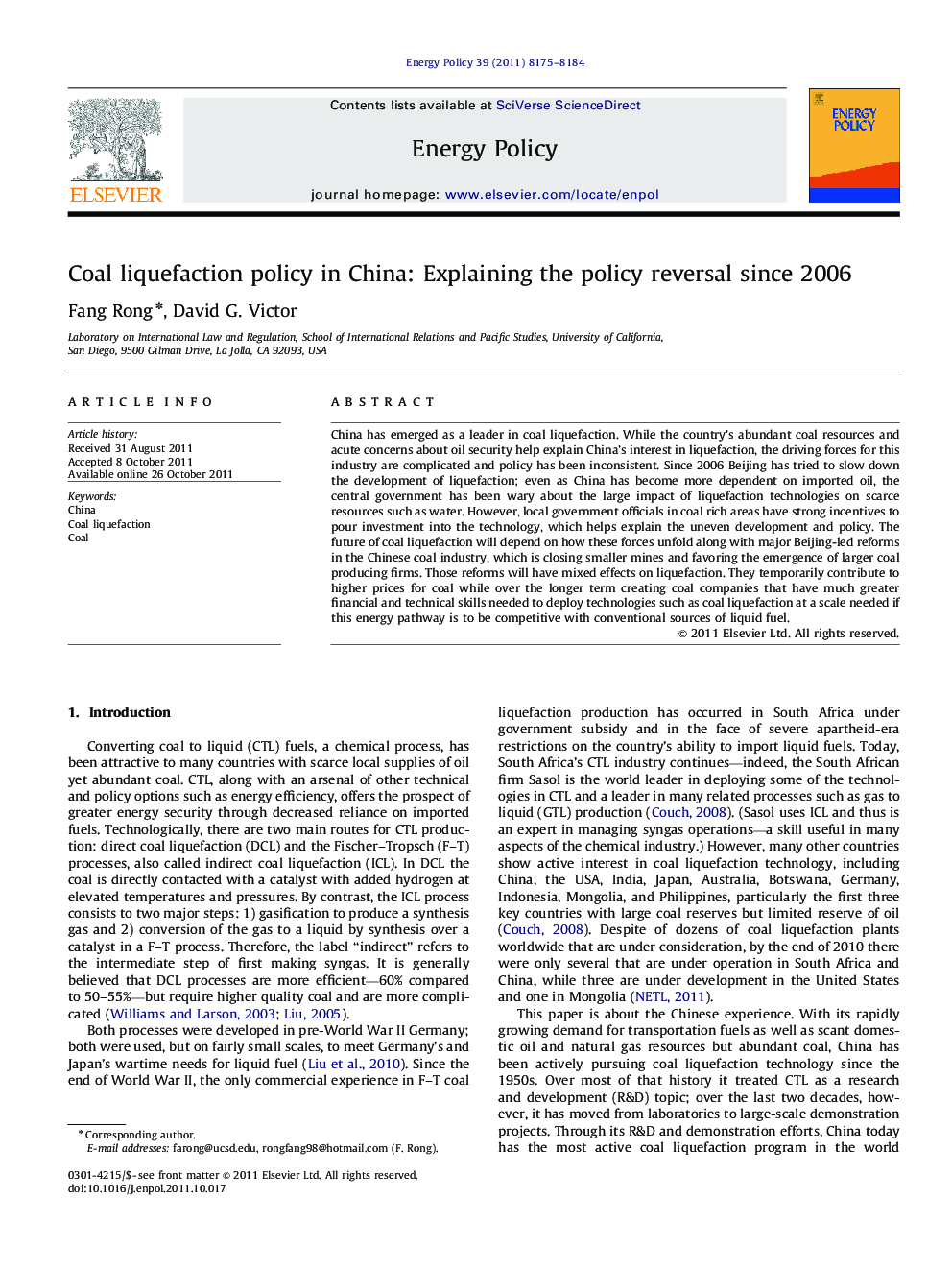| Article ID | Journal | Published Year | Pages | File Type |
|---|---|---|---|---|
| 993260 | Energy Policy | 2011 | 10 Pages |
China has emerged as a leader in coal liquefaction. While the country's abundant coal resources and acute concerns about oil security help explain China's interest in liquefaction, the driving forces for this industry are complicated and policy has been inconsistent. Since 2006 Beijing has tried to slow down the development of liquefaction; even as China has become more dependent on imported oil, the central government has been wary about the large impact of liquefaction technologies on scarce resources such as water. However, local government officials in coal rich areas have strong incentives to pour investment into the technology, which helps explain the uneven development and policy. The future of coal liquefaction will depend on how these forces unfold along with major Beijing-led reforms in the Chinese coal industry, which is closing smaller mines and favoring the emergence of larger coal producing firms. Those reforms will have mixed effects on liquefaction. They temporarily contribute to higher prices for coal while over the longer term creating coal companies that have much greater financial and technical skills needed to deploy technologies such as coal liquefaction at a scale needed if this energy pathway is to be competitive with conventional sources of liquid fuel.
► We explain swings in Chinese policy on coal liquefaction, a possible substitute for imported oil. ► Since 2006 Beijing's support has waned due to fears about environmental impacts and cost of liquefaction. ► Local governments in some coal rich regions remain strongly supportive. ► Volatile oil prices and rising coal prices make this industry more risky than previously thought. ► Consolidation of the coal industry will have mixed effects on viability of liquefaction projects.
